©author(s)
Journal of Migration Affairs
Vol. 1(2) : 33-50, March 2019
DOI: https://doi.org/10.36931/jma.2019.1.2.33-50
Pdf Issue:the-realm-of-inbetweenness.pdf
Introduction
The question of belonging to a ‘place’ is often recognised as being associated with the idea of ‘home’. But it is necessary to understand which lens we are using to form ideas of ‘home’ and belongingness. ‘Place’ has elements of physical boundaries as well as spatial aspect to it, but it is not solely circumscribed by territorial dimensions; the ‘sense’ of the place is also important (Tuan 2001). Michel de Certeau states that ‘space’ is embedded within a realm of meanings which are given by the individuals utilising the ‘place’ (Leach 2005). Thus, the experience or sense of belonging to a ‘place’ can be termed as ‘space’. The idea of ‘experience’ is important here, as the notion of identity and belongingness arises from the knowledge imparted via experience of the surrounding world (Sarukkai 2012). The realm of ‘experience’ and the debates around its ‘authenticity’ are vast. In my paper, I agree with Guru and Sarukkai’s approach on ‘experience’. They borrow certain aspects of phenomenology about how an individual experiences the surrounding as an ‘embodied self’ via her senses and consciousness in the form of thoughts and memories; these lived experiences cannot be dismissed on the premise of being subjective in nature (Guru and Sarukkai 2012). I, thus, examine how ‘place’, which is defined in terms of a physical territorial aspect, can be distinguished from ‘space’ which involves the realm of experience to form meanings to comprehend the world around us. But are they indeed distinguishable and mutually exclusive?
Tuan, too, brings in the role of ‘experience’ to understand ‘space’ and ‘place’. For him, the demarcation between both dissolves in the realm of experience. Both no longer remain mutually exclusive autonomous categories but are co-constituted by each other in order to define one another (Tuan 2001). Thus, the ‘place’ is the physical territory that transforms into ‘space’ as it is situated within meanings (Leach 2005). In this paper, I attempt to bring out how a place garners meanings attributed to it by the individuals who inhabit that place and hence convert the ‘place’ into their ‘space’. So, instead of using both concepts interchangeably, I shall be subscribing to the demarcation between ‘place’ and ‘space’ as stated by de Certeau. Thus, the idea of a place not being merely a physical, territorial unit needs to be emphasised. One needs to understand how the physical boundaries are circumscribed by the social meanings given to them by individuals, thus leading to the formation of ‘space’.
In this paper, I explore the relation between memory and place-making via documenting and understanding the experiences of the inhabitants of the locality of Pandu in Guwahati, Assam, which presently comprises several old settlements of people whose prior generations have migrated to this area. Guwahati has historically been a port city, and present-day Pandu includes the erstwhile operational Pandu port and railway station; the idea is also to understand the experiences of people who have settled in and around the port over time.
Following the introduction, the second section of the paper discusses the complex idea of ‘home’ and ‘belonging’ associated with place-making. How do individuals construct the idea of ‘home’? How do they attach meanings to the place where they live and make the fixed, map-able territories and structures fluid? Construction of boundaries and concrete architectures is what contributes to mould the spatial aspect of a place. But we must also consider that boundaries are porous and not fixed or static. Where can we then situate the stability of a place if we say that the territories are fluid social constructions? The process of ‘place-making’ thus, involves not just the dimension of tangibility in the process of defining space but also has elements of performances or repetitive actions by the individuals who develop relationship with the place. Benson and Jackson term the act as ‘doing’ place, as a place is not just a subjective interpretation and allocation of meaning by the individual; rather, there are continuous repetitive processes of engagement with the place by the individual in order to define the place in the project of place-making (Benson and Jackson 2013). So, the fixity and fluidity of a ‘place’ are mutually constitutive of each other. The ‘place’ in terms of its territorial aspect, with physical boundaries and other architectural components, denotes the map able, that is, stable dimension, whereas the aspect of every person attributing subjective meaning to mould one’s own ‘space’ depicts how the idea of ‘place’ remains in a state of flux.
So, where does the question of one’s identity emerge if the boundaries are in a state of flux and are embedded with subjective meanings? How does an individual relate to a ‘place’ or ‘space’ in order to form her identity? In the third section, I seek to deal with such questions where I look into narratives and oral histories of individuals that relate to remembering and constructing a certain kind of ‘past’ to engage in place-making. The process of recollection of memories and the aspect of harboring a ‘shared history’ among the migrant communities of Pandu becomes important in to form the ideas of belongingness and tracing identity. Such questions of identity have been dealt by Anderson in the context of formation of boundaries of nation-states and shared collective sentiment of nationalism. The idea of ‘nationhood’ in his argument emerges as a construct associated with boundaries of state and territories (Anderson 2006). But redefinition of one’s identity does not always mean the identity to be wholly fluid in nature; an aspect of static notion of ‘past’/’tradition’/’homeland’ retains within the memory of the individual who negotiates it with a new space and its culture (Thapan 2005). Considering such lines of argument, it appears that the spatial stable dimension of ‘place’ enables an individual to develop her notion of ‘identity’ and construct subjective interpretations of ‘space’, but certain elements of fixed notions of the ‘past’ also remain imbued within the fluid constructions of ‘identity’ and ‘space’.
But how does the sentiment of ‘belonging’ and ‘identity’ develop related to ‘place’? Is it entirely personal or does it have elements of collective? What is the role of memory associated with a place in the tracing of one’s identity? The imagination of oneself as part of a community has the element of collective imaginative and, thus, a collective memory or ‘shared past’ to it. An individual memory is encompassed by the collective memory. This process of recollection of memory involves people associating a memory with a group they see themselves as belonging to (Halbwachs 1980). Paul Connerton also deploys Halbwachs use of ‘collective memory’ but goes ahead to elaborate on the transmission of a particular memory beyond an individual or group over temporal and spatial domain. The aspect of recollection via re-telling of certain memories across generations is also important (Connerton 1989). The fourth section of the paper pertains to such aspects of memory in the form of various stories and ‘myths’ of Pandu’s ‘past’ that are told and retold among individuals across generations to keep ‘alive’ and preserve certain memories of Pandu across time.
The question of retracing memories brings in the aspect of past and, thus, the realm of history. The past is never an undiluted form of entity that resides in the memory. The past gets rewritten and revised through memory. One needs to be critical about what one considers to be as a ‘true’ past because past is never intact, it alters and reconstructs itself based on performativity of the recollection of memories (Kuhn 2002). Myths, folktales, stories or personal narrations are thus, often disregarded as accountable to depict ‘past’ (Trouillot 1995). An individual’s recollection of memory or a collective memory of a community via oral narratives and myths may not be a part of history, but where does one draw the boundary of ‘real’ and ‘imagined’? In the concluding section, I have documented the relevance of myths associated with various places that are crucial to understand how individuals think about the ‘past’ of a place and what is the role of memory and storytelling in the process of ‘place-making’.
Terrains of belonging: Finding ‘home’
Fig 1: Pandu port gate, Location: Pandu, Guwahati, Assam; Picture by: Aishee Bhattacharjee, October 2017
Fig 2: Area around Pandu station. Picture by: Aishee Bhattacharjee, October 2017
I began my fieldwork in Pandu, Guwahati, in September in 2017. I engaged with the people to understand how Pandu as a ‘place’ is constructed and continues to exist within the mindscape of the communities inhabiting there. Analysis of personal narrative provided an understanding to interpret the relationship between an individual and the social relations one is entangled in (Barbre et al.1989). I also sought to understand the memories associated with Pandu port that has ceased to exist in present times. I have engaged with the narrative methodology to understand how individuals create meanings to conceptualise their experiences and how they construct their everyday lives within the context of where they live—in this case Pandu. Simultaneously, as a researcher, it was important for me to recognise that I could not ignore my own social and cultural histories; I needed to acknowledge that my experiences as a researcher were implicated in my field. During my fieldwork I understood how my identity as a Bengali speaking woman researcher was crucial in determining the kind of narratives I came across. It was important for me to recognise how my communal identity as a Bengali-speaking individual had an impact on my engagement with the participants of the research.1 The responses show that interviewees engaged in dialogue with me based on my identity and the language in which I spoke. Similarly, my presence in the field as a woman researcher played a significant role during the interviews and the kind of narratives I gathered from different participants. For instance I did a major portion of my fieldwork with a family residing in a temple near Pandu station and the narratives which I secured from the eldest woman of the house showed a visible difference in the absence of the male head priest compared to his presence. In this case, my identity as a woman enabled me to build a better rapport with the woman compared to the male head priest of the temple; which made me reflect on the gendered aspect of my research. My language, gender and other socio-cultural context was clearly visible in the kind of narratives I secured during my research, which has been reflected in the paper.
For my research I decided to adopt walking as a method as I wanted to get a nuanced understanding of the spatial and social context of the residents settled in and around Pandu port. My experience of walking around the place enhanced my knowledge of the spatial terrain, and enabled me to refine my observations about the physical/geographical terrain and the experiences of the people associated with the place. About adopting walking as a method, Lawhon writes that it should not be restricted to a mere unreflective act of moving around a place; rather, it should involve processes of movement, interactions and observations which can help a researcher develop her observation skills, local knowledge and gain an embodied knowledge of the place (Pierce and Lawhon 2015). Having interactions with the people while exploring the place helped me to incorporate my observations into my conversations with my participants and I was able to, as Anderson puts it, ‘become aware of the key routines, habits and practices through which people inscribe their knowledges into places’ (Pierce and Lawhon 2015, 3). The initial days of walking helped me understand the geography of the place and discover aspects such as the existence of Pandu railway station that is no longer functional. As I walked towards the disused port, I could see how the spatial representations altered as one walked away from the main road to the interiors. The buildings closer to the main road are newly emerging flats and complexes whereas the structures transform into small one storey tin-roofed temporary houses as one moves towards the port.
When I began my field visits, Durga puja was on the horizon and the lane where the road sign for Pandu port stood was packed with craftsmen and others busy decorating the place for the festival. I encountered one of the Durga puja pandal organisers for the para (colony) club.2 He told me the entire area celebrates the occasion in a big way, with people across communities coming together for it. His grandfather had migrated to Guwahati to work in the railways and since then they have been living in Guwahati. He said, ‘Ei maati tei jonmo amar, etai amar bari’ (This is the land where I have been born and this is my home). He has lived in Guwahati since his childhood and Guwahati is his home. He does visit Kolkata occasionally to see his relatives but there is no specific attachment to the place. Being born and growing up are two different things but in the case of this interviwee these two exist in a continuum and bolster the sense of belonging to the ‘place’. Here, the meaning of ‘home’ is bound to the spatial terrain where one has grown up. This interviewee has no particular associative memory of hailing his roots from Bengal in his ‘personal memory’. But his active participation in festivals like Durga puja that is closely associated with Bengali culture indicates the aspect of ‘shared history’.
The memory of the ‘past’ is based on the experiences of the community and the individual’s association with the community’s shared experience (Russell 2006). Thus, one can say that memories can belong to a person but it can extend far beyond the personal. But where does one find the boundary that separates personal from the collective? What is personal can be represented in the collective and the collective also shapes the personal. Both exist in co-constitution with each other. The notion of nurturing a shared collective past converts the personal into a collective memory and vice-versa. In such cases the individual who holds the personal memory about a particular event may not even have experienced that event by herself; it may have come down to her via generational stories that again recreate the meanings associated with the memory.
On reaching Pandu port I found that the gate to the complex was closed and I could not enter the premises. I interacted with a shopkeeper whose shop was right next to the port gate. He spoke to me in fluent Bengali after I initiated the conversation in Bengali. On being asked about his ‘homeland’ he said that his home is in Bihar and he had migrated to Assam years ago in search of work; when he was employed in the port to load and unload steel. But when the port became inactive and the workers had to search for alternative employment, he set up the shop in the area. He married an Assamese woman and has children whom he takes to his ‘hometown’ in Bihar for annual visits. For him ‘home’ embodies a place where he was born and can trace his roots to. Despite the fact that he has no land or remnants of a house in Bihar, he has constructed his identity around the memories of home and a lost childhood with his brothers and family, an identity that he wants to inculcate in his children as well.
Another interview complicated the notion of ‘home’ for me. While walking along the houses near the port, I asked a girl I met along the way about old settlements in the area. She took me to a small shack-like structure with a common courtyard where three men were sitting. The men were brothers and had been living in the area for more than fifty years since their parents had migrated to Guwahati for work. The eldest brother said that the whole area is under the port authorities and since one of the family members used to work in the port when it was operational they got the place to stay. When I asked about the idea of ‘home’, he told me that their ‘homeland’ is Bihar as they hail from there. And despite being born and raised in Guwahati they think they belong to Bihar even if no one resides there now. He said, ‘Amar desh er bari Bihar e, keu thakuk na thakuk, jyamon apnaar Kolkata te, ekhan e apni aar ami bahir er, eta Assamese der jaega’ (My home will remain Bihar whether anyone lives there or not, just like you are a Bengali and you hail from Kolkata. So you and I are outsiders in this land; this land belongs to the Assamese).
The idea of ‘home’ is, thus, complicated. For some, being born in a land makes it their ‘home’, while for others ‘home’ is mostly closely associated with one’s community’s identity/‘shared past’ despite being born in or living for a long time in an ‘alien’ land. The notion of ‘alien’ implies foreignness. Here the domain of foreignness is not just relegated to a different land or territory; it is also associated with the sense of being considered a foreigner in terms of identity. The individuals who trace their belonging to Bihar despite residing for a long time in Guwahati indicated a sense of yearning to go back to their ‘homeland’. The shopkeeper who migrated to Guwahati for work has personal memories of his erstwhile home in Bihar which he continues to inculcate in his children to retain the ‘past’ and ‘community identity’. In the case of the three brothers, although they have not been born in their ‘homeland’ of Bihar, yet they feel a sense of ‘loss’ for that ‘imagined past’ and continue to associate their identity with that ‘place’, language and community. Such a sense of identity and belonging indicates how the personal is embraced by the collective.
In all these narratives one finds the act of ‘yearning’ to be common across all. What also needs to be interrogated is the preservation of this ‘yearning’ across spatio-temporal contexts. Here, the act of ‘yearning’ tends to become more an end in itself than the means to an end, that is, the yearning of a ‘past’ is nurtured that does not result in an actual return to that ‘past’. Can one then regard the ‘yearning’ in relation to the trope of ‘nostalgia’ as more important that the actual act of return to that particular realm of ‘past’? The trope of nostalgia is, thus, important to understand the ideas of belonging that one develops for a place and for the sustenance of the act of yearning towards a ‘lost past’ (Ramaswamy 2004). ‘Nostalgia results in the impulse to preserve, maintain, or create a sense of place in one’s surrounding’ (Farrar 2011). Thus, the construction of a particular ‘past’ in the memory is what generates a sense of yearning to return to that realm of the ‘past’.
Memory and spatial stories of ‘past’
Memories can serve as a domain of intersection of time, space and the cultural realm. There is no memory that exists in an isolated form; there is always an influx of other elements fashioning a memory into a collective form. The memory, or rather the process of recollection of memory, serves as a mediator between the two realms of personal and collective/public. What we choose to remember also involves forgetting and recollection cannot happen in a precise matter. The question of migration and problems of ‘identity’ involve the issues of memory and loss. What kind of memory can instigate a sense of loss? Is it the past memory of the ‘homeland’ or the memory of some kind of marginalisation that haunts the person? How does one define loss?
A form of loss that has emerged in migration debates is the loss of ‘identity’ that migrants face due to getting uprooted from their ‘homeland’. This loss of severing ties with the ‘homeland’— imagined or real—manifests in a sense of loss of identity in the mindscapes of the migrants. Individuals in this process develop a collective memory of the ‘past’. They nurture this as something fixed that they have left behind and carry out selective appropriation to remember or forget certain segments of the past suited to the present-day context. The imagination of a shared collective past works towards defining an idea of the ‘homeland’ in the personal memory. There is a shift in the aspect of personal and public being discrete entities. Memory making does not involve a linear trajectory; it comprises mental fragments and glimpses of certain images that help in revising the past. In this section I deal with the role of memories in constructing the ‘past’ of Pandu and how it is kept ‘alive’ in the present by the inhabitants.
Fig 3(left): The remains of the railway tracks; Fig 4(right): The abandoned remaining structure of the Pandu station’s platform. Picture: Aishee Bhattacharjee, October 2017
From the interviews around Pandu port I came to know about the existence of Pandu railway station that was functional before the construction of Saraighat bridge across the Brahmaputra and a temple called Pandunath near it. While walking in search of the station, I crossed a bazaar by an old railway track and encountered a woman who showed me the Pandu station platform, a dilapidated and abandoned structure. I asked her about the bazaar along the tracks I had crossed on the way and she told me that it was Pandu bazaar, which began growing when Pandu station ceased to function. She said there used to be a signboard for Pandu station but sometime back the government removed it. Now if someone asks about the station no indication remains to define the place. The place is abandoned and has been taken over by wilderness over the years.
I continued walking and crossed the abandoned station platform to reach a small temple with a courtyard or ‘aangan’ in the front where some people were sitting. A woman told me the temple is her family’s property and they have been living there for decades. She told me the temple had been built by the colonial rulers when Pandu station was active, that is, before the Saraighat bridge was built. To know more about the history of Pandu station and this temple, I spoke to her father-in-law, who was the priest of the temple. He said that they are Brahmins from Uttar Pradesh. His father had migrated to Guwahati in search of work and was hired as the temple priest when a Shiva idol was found in the land where the temple stands. Looking around I observed small cubicles inside the temple premise. The woman said that the cubicles functioned as shelters during colonial times for the coolies who used to halt at the station for work when the trains ran. She moved here after her marriage and she remembers the times when she used to ride the ‘setel’3 train to and from Pandu station.
Memories have distinctive meanings for particular individuals. The sense of ‘loss’ that is evoked can be about a particular event or place or person that the individual continues to yearn for in personal memory. During my interaction with the woman, she dwelt on how the temple and Pandu station lost their relevance after the construction of the Saraighat bridge. She remembers the times when the temple used to teem with people coming from different places on trains and ferries. The station ceased to exist and people stopped coming. Now, all that is left is her family and the structure of the temple. The loss here can be represented as the death of a ‘place’ or a ‘past’ that has been/will be forgotten. This depicts the fuzzy boundary between ‘place’ and ‘space’, with the spatial structure attaining the meaning of a ‘shared past’ of a family. Architectures are never unmarked; they depict meaningful relationships between place, space and time. Spatial representation thus, can be repositories of various meanings and representations that can lead to formation of memories as well. The place memory is then associated with creation of a ‘past’ within the minds of the individuals (Farrar 2011).
Fig 5: The courtyard of the temple near Pandu station. Picture: Aishee Bhattacharjee, October 2017
Fig 6: The cubicles inside the temple premise that served as shelters for the coolies during colonial times. Picture: Aishee Bhattacharjee, October 2017
The woman told me since they have been living in the temple premise for the past thirty-five years she feels the space of the temple now belongs to their family. They maintain the temple with their own money and have secured the property rights from the court as well. She said, ‘Pushtaini joh chalta rehta hai who toh log apna hi lete hai na?’ (What goes on for generations, people adopt to that, right?). In this case, residing in the temple premises for a long time has nurtured a feeling of ‘home’ away from her ‘homeland’ that has enabled her to convert the temple premises and architecture into her ‘space’ where she and her family could secure new roots. As inheritance within family is related to preserving community identity and defining ‘home’ by creating a familiar ‘space’ through demarcation of boundaries, the priest fought in court to secure property rights of the temple. This indicates how the territorial borders also define ‘identities’ and preserve the idea of ‘belongingness’ for a community. Experiences of individuals, identity markers and subjective meanings of ‘space’ are not formed in isolation but are structured by interaction with ‘place’, territory and landscape (Borer 2010). Thus, the process of place-making is extremely intricate. Boundaries, real and imaginary, are made and unmade in forming identities and creating new meanings of spaces across spatio-temporal realms.
Stories of ‘past’: Discovering the mythical topography
Fig 7: Pandunath temple at sunset. The Saraighat bridge on the Brahmaputra can be seen from the temple. Photo: Aishee Bhattacharjee, November 2017
In this section, I delve into the domain of storytelling and myths in the process of place-making. In the course of conversations with the inhabitants of the area, I was able to contextualise Pandu in terms of tracing an association between Pandu port, Pandu railway station and the Pandunath temple situated by the Brahmaputra river. While walking and interacting with residents settled around these historical sites, the role of memory in keeping these places ‘alive’ in the present context unfurled in front of me. In various interviews the participants kept talking about the idea of a place being ‘dead’. Was it a reference to the port and station being non-functional and hence their depreciation over time, or did it refer to the movement of people away from the erstwhile ‘lively’ places? Despite that, I found the relevance of Pandu persists and gets redefined in the memories, narratives and experiences of the people living around it till this day. During my fieldwork in the ‘colonial’ temple and Pandunath temple, different versions of the ‘past’ of the place were recounted.
Pandunath temple is situated close to the Kamakhya temple, a renowned place of worship in Assam, but the temple remains tucked away from the hustle bustle of the main road. I interviewed the secretary of the temple who told me the name of the place Pandu is derived from the Pandunath temple, where it is believed the Pandavas came to worship Lord Ganesha after which they headed towards the Kamakhya temple, a major Hindu pilgrimage site. According to the temple secretary, it is believed that if a devotee offers prayers first in this temple and then goes to Kamakhya, it will be more auspicious and beneficial for her. Despite this belief, very few people visit this temple these days, he has observed. The government also neglects the temple, with most of the funds going into Kamakhya temple’s maintenance, making the Pandunath temple a footnote in history. He said he migrated from Kolkata after his father died and has been here for forty years. ‘The place has changed drastically over the years. Earlier, people used to visit it a lot as public transport was poor back then and this was the junction from where people went to Upper Assam. Ferries, trains all used to come here. The Guwahati– Shillong bus route went through here. Now everything has gone. The station was closed and people started moving away from this place.’
The temple secretary said that Pandunath is another name for Vishnu and the temple has been constructed around a huge boulder known as Vishnusheela (sheela: rock), which is painted saffron. The temple has an underground cavern with a Shivalinga. It is believed that the boulder Vishnusheela emerged from the waters of Brahmaputra while Vishnu was fighting with a demon. It was a difficult battle for Lord Vishnu as the demon would keep disappearing in the waters of Brahmaputra. It was then that the boulder emerged on which Vishnu placed his feet and managed to kill the demon. By recounting this narrative of the temple ‘past’, the temple secretary wanted to convey the mythic significance of the temple which should have been preserved as a religious site but has been neglected by the state.
Fig 8: The underground space where Shiva linga is worshipped that is also a part of the mountain around which the temple has been built. Picture: Aishee Bhattacharjee, November 2017
Fig 9: The ‘Vishnusheela’: Saffron painted boulder of the mountain along with sculptures of Pandavas worshipping Ganesha. Picture: Aishee Bhattacharjee, November2017
The priest of the ‘colonial temple’ near the railway station narrated the history of his temple. According to him, since this temple came physically and spatially before the Pandunath temple, a devotee needed to offer prayer at this temple first and then proceed to Kamakhya temple. He told me that there are four ‘dwars’ (gates) to get one’s wishes fulfilled: Hanuman dwar, Singha dwar, Ganesh dwar and Bhairo dwar. It is believed that each path has its own significance in terms of fulfillment of the wishes of a devotee. The priest believed his temple belongs to the Bhairo dwar while the Pandunath temple does not belong to any dwar. While he was recounting these stories his grandchildren came and sat down to listen to them. He told me these stories are associated with Assam’s past and have been mentioned in KalikaPurana, the knowledge of which is getting eroded over time. He inherited the stories from his father and would pass them down to the coming generations to preserve the ‘past’ and ‘shared identity’. The performance of telling and retelling of the ‘past’ in this case takes the shape of preserving a certain form of ‘family tradition’ in a land away from the ‘homeland’. Formation of myths thus, takes form of a repetitive performance that seeks to take a ritualistic form and this ritualistic performance of myth enables the creation of memory transmission across generations (Feuchtwang 2010). The inheritance of mythological stories and rituals or customs of a community can also be seen as markers of constructing a ‘shared past’ (Myers 2002). In this process of telling and re-telling of myths there is process of transmission of particular forms of collective memory across time.
In the above narration of myths we can find commonalities as well as contestations in the depiction of Pandu’s ‘past’. In both the narrations the narrator seeks to prioritise his own temple/myth but both seek validity of their temple’s religious significance by situating them in relation to Kamakhya temple, which is an important historical and current religious site. Thus, they seek to prove their own rendition of the ‘past’ as the ‘authentic’ and important one. In the narration of both myths one can also see the presence of ‘place’ and ‘space’ as mutually constitutive rather than being separate from each other. The ‘place’, that is, the geographical territory of Pandu gets transformed into ‘space’ in the form of constructed myths around it. The everyday gets linked with the myths as the myths create a sacred space within the profane. The notions of ‘space’ and ‘place’ thus, get reconceptualised. In these narratives one can see the coexistence of cartographic space and the sacred space. For instance, in the first myth, the Brahmaputra plays a significant role as it serves as the battlefield of Vishnu. The demon manages to deceive Vishnu by hiding in the Brahmaputra’s water. Similarly, in the second narrative, the cartographic space of Kamakhya gets tied to a sacred space in the myths related to religious ‘dwars’ or gates for wish fulfillment for a devotee. The nomenclature of the place Pandu, as described, has a religious premise as well since it derives from the Pandavas who visited the Pandunath temple. Banikanta Kakati also draws similar analogy to show how cartographic territory is embedded within sacred topography by stating that ‘Kama-rupa the old name for Assam – was derived from the goddess Kama-khya’ (Kumar 2011).
These processes of story-telling about the myths depict an intersection of the mundane and sacred. The ‘place’ gets transformed into ‘space’ by individuals in their everyday lives. Engaging in certain practices and reproducing them can be an enabling and agentive act in itself as Nilufar Ahmed in her work talks about. The act of recreating one’s homeland in a foreign territory through practicing certain norms, customs, maintaining certain rituals relates to broader question of defining the identity (Ahmed 2005). The process of passing down the knowledge of ‘sacred past’ of Assam of Kalika Purana or the temple itself, by the head priest to his next generations depicts how a ‘collective past/identity’ gets tied up to a place and its ‘past’ via myths. Ramaswamy has also written on this line of argument as she shows how the collective imagination of trying to trace the homeland or ‘past’ by the Tamilians to an ‘imagined’ fictitious landmass of Lemuria plays a crucial role in identity formation among the Tamil people. She brings in the idea of loss, nostalgia and memory in her work and the interconnection of cartographical space and mythical ‘imagined’ space (Ramaswamy 2004). The ideas of ‘home’, ‘past’ and ‘belonging’ is thus very complicated. It needs to be situated within individual experiences in order to be understood alongside presence of the ‘place’ in interaction with the individual.
The construction of identity/‘collective past’ in an ‘alien’ land does not merely depend on physical boundaries; rather, it involves a psychological space that enmeshes both the ‘past’ and the ‘present’. The identity gets transformed socially and culturally as the migrants can neither entirely sever ties with their homeland nor can they return to their erstwhile identity at home (Ahmed 2005). What comes out of this is that the migrants seek to seep the remnants of their past into their present. The domain of shared memory or ‘past’, thus, becomes important to form ‘identity’. In Pandu, the process of inheriting ‘myths’ and imagination/recollection by the individuals of an ‘imagined past’ of home, belonging, identity and even the old architectures and spatial representation ensures the continuation of the project of place-making to construct the ‘place’ and ‘space’.
Conclusion
My research enabled me to understand the aspect of how the ‘past’ continues to manifest in the ‘present’ via various spatial and narrative representations and experiences. As Rose argues, ‘place’ in terms of the spatial demographical concept is not bereft of ‘space’; rather, it is interlaced with the experiences of individuals who derive the ‘sense of place’ by identifying with and creating a sense of belonging for it (Rose 1995). For some, the ideas of ‘belonging’ and ‘home’ were related to being born in a certain land/ location, whereas for others it was being part of a shared collective ‘past’. The memory of home for some are, thus, dependent on ‘place’ and its spatial markers in the form of buildings, population, movement of people, road signs or boards, ports or stations that in turn determines the formation of place memory and notion of belonging.
For others, place-making involves a complex process of creating meaning for the place via various processes like preserving a memory of a ‘shared past’, and recreating the essence of ‘home’ and ‘space’ in the new spatial terrain. An individual develops place memory in relation to spatial architectures in the process of place-making but simultaneously the place also gets determined via the meanings, experiences and memories of individuals cohabitating in it. Hence, the ‘place’ exists in relation to ‘space’ and vice versa, both determining each other. For instance, the temple site near Pandu railway station was transformed into a new ‘home’ for the migrant family living there away from their ‘homeland’ who developed feelings of belonging for the place over time. But also, the sense of belonging to the place has been maintained by preserving the community identity via the practice of inheriting myths across generations. Migration is not just movement of people transgressing spatial demographic boundaries; rather, it incorporates a broader corpus of living and experiencing complex processes of place-making. Migration can, thus, generate new meanings of ‘place’ and ‘space’ in the process of place-making.
The undercurrent throughout the narratives in this paper is how the existence of Pandu as a ‘place’ is not merely in terms of its spatial significance; rather, it becomes associated with various experiences of inhabitants creating ‘spaces’ of memory and identity. For instance, the domain of religious myths and storytelling introduces the many ways in which inhabitants associate a place with their memory and construct a ‘past’ around it. It is not that the spatial geography of Pandu, that is, the cartographical locations is negated in such representations; rather the myths construct a space of confluence of sacred and cartographic mappings. The memories also reshape themselves according to several interpretations in order to sustain and preserve the common ‘past’, resulting in complex processes of identity formation around it. The project of place-making thus, encapsulates the meanings and experiences that individuals attribute to define ‘spaces’ along with recognizing the spatial territorial geographies of ‘place’. Thus, rather than constructing binaries between cartographical places versus ‘imagined’ spaces, that is, ‘place’ versus ‘space’, one needs to relocate the systems of knowledge and understand all these categories in relation to and in dialogue with each other rather than segregating each as mutually exclusive units representing polarities.
End Note
1. I have used the word ‘communal’ to refer to the identification with one’s own community. Certain terminologies tend to inhabit a set of pejoratives over time due to their usage in specific contexts. ‘Communal’ is one such word due to its use mostly in contexts of riots and violence between different communities.
2. Pandals are temporary structures that shelter the idols during a large puja celebra-tion such as Durga puja. Durga puja is celebrated in Bengal with huge pomp and show, and is closely tied to the identity of most Bengalis; it is a significant repre-sentation of the community ethos and culture.
3. This is a reference to the narrow gauge tracks that have now virtually disappeared.
References
Ahmed, Nilufar. “Women In Between- The case of Bangladeshi women living in London.” In Transnational Migration and the Politics of Identity, by Meenakshi Thapan, 99-127. New Delhi, Thousand oaks, London: Sage Publications, 2005.
Joy Webster Barbre et. al. Interpreting Women’s Lives: Feminist Theory and Personal Narratives. Bloomington and Indianapolis: Indiana University Press, 1989.
Anderson, Benedict. Imagined Communities . London, New York: Verso, 2006.
Borer, Michael Ian. “From Collective Memory to Collective Imagination: Time, Place, and Urban Redevelopment.” Symbolic Interaction, Vol. 33, No. 1, 2010: pp. 96-114 . Connerton, Paul. How societies remember. Cambridge, UK: Cambridge University Press, 1989.
Farrar, Margaret E. “Amnesia, Nostalgia, and the Politics of Place Memory.” Political Research Quarterly, Vol. 64, No. 4, Published by: Sage Publications, Inc. on behalf of the University of Utah , 2011: pp. 723-735.
Feuchtwang, Stephan. “Ritual and Memory.” In Memory: Histories, Theories, Debates, by Bill Schwarz Editor(s): Susannah Radstone, 281-298, New York: Fordham University Press, 2010.
Guru, Gopal, and Sundar Sarukkai. The Cracked Mirror: An Indian Debate on Experience and Theory. New Delhi: Oxford University Press, 2012.
Halbwachs, Maurice. The Collective memory . New York: Harper and Row, 1980.
Jackson, Michaela Benson and Emma. “Place-making and Place Maintenance: Performativity, Place and Belonging among the Middle Classes .” Sociology, Vol. 47, No. 4 published by Sage Publications, Ltd, 2013: pp. 793-809.
Kuhn, Annette. Family secrets: Acts of memory and imagination. London and New York: Verso, 2002.
Kumar, David Vumlallian Zou and M. Satish. “ Mapping a Colonial Borderland: Objectifying the Geo-Body of India’s Northeast.” The Journal of Asian Studies Vol. 70, No. 1, 2011: 141-170.
Leach, Neil. “Belonging: Towards a Theory of Identification with Space.” Perspecta, Vol. 33, Mining Autonomy, 2002: 126-133.
Myers, Fred R. “Ways of Place-Making.” La Ricerca Folklorica, No. 45, Antropologia delle sensazioni , 2002: 101-119.
Pierce, Joseph, and Mary Lawhon. “Walking as Method: Toward Methodological Forthrightness and Comparability in Urban Geographical Research.” The Professional Geographer, Vol. 67, Issue 4, 2015: 655-662.
Ramaswamy, Sumathi. The Lost Land of Lemuria: Fabulous Geographies, Catastrophic Histories. Berkeley, Los Angeles and London: University of California Press, 2004.
Rose, Gillian. “Place and Identity : A Sense of Place .” In A Place in the World? Places, Cultures and Globalization , by Doreen Massey and Pat Jess, 87-132. New York: Oxford University Press, 1995.
Russell, Nicolas. “Collective Memory before and after Halbwachs.” The French Review, Vol. 79, No. 4 , 2006: 792-804.
Thapan, Editor: Meenakshi. Transnational migration and the politics of Identity. New Delhi, Thousand Oaks, London: SAGE publications, 2005.
Trouillot, Michel-Rolph. Silencing the Past: Power and Production of History. Boston: Beacon Press, 1995.
Tuan, Yi-Fu. Space and Place The Perspective of Experience. Minneapolis, London: University of Minnesota Press , 2001.


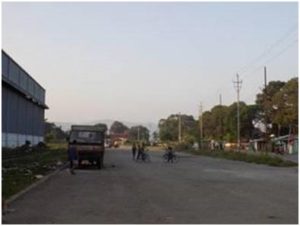
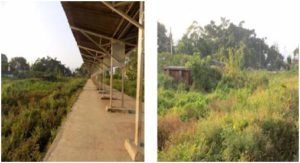
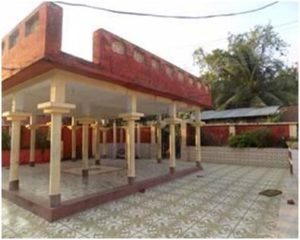
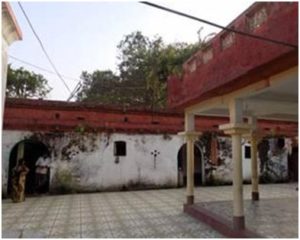
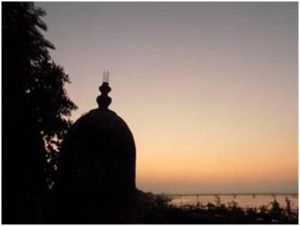
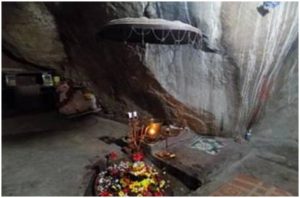
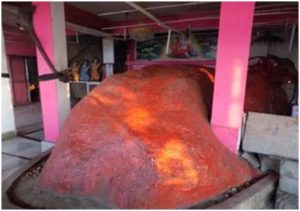
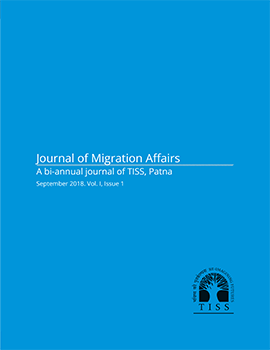
Leave a Comment
Comments are moderated and will be published only if found appropriate. Comments may take some time to appear.
Your email address will not be published. Required fields are marked with *